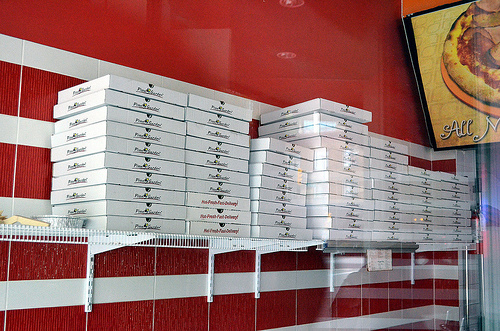
Pizza is a conundrum. To really get a good pizza, it has to be cooked in a specialty oven at far higher temperatures than you can reach at home. But we also, culturally, kind of insist that pizza be delivered to our homes. (Out of the 3 billion pizzas consumed a year, 2.1 billion have been delivered.) The challenge then becomes to get the pizza from the super-hot oven at the restaurant to your home (up to 30 minutes in most areas) without the pizza cooling off.
To add extra complexity, the pizza box has to be an excellent insulator AND cheap and disposable. Pizza restaurants have to leave the box with the customer, and it has to be easy for the customer to get rid of.
The humble corrugated cardboard box has done fairly well for us for decades, but there are certainly some down sides to this design. It isn't technically recyclable (since it is usually covered with cheese and sauce), and even though cardboard is a pretty good insulator, it still has to be transported inside an insulated sleeve by the delivery driver. Once it gets pulled out of that sleeve and presented to the customer, the clock is ticking.
Cardboard also has a notorious tendency to get soggy, to lend the pizza a taste of damp cardboard, and to sag at the top, allowing the top of the box to squash into the pizza, taking some of the cheese with it when it's lifted. These problems happen because the box isn't properly vented, allowing steam from the hot pizza to build up inside.
Enter the VentIt box, invented in India, where pizza delivery is huge business. The VentIt is made of corrugated cardboard which is basically manufactured inside-out. This simple change allows steam to escape, while retaining heat. Brilliant!
Image courtesy Flickr/Mag3737

1 comments